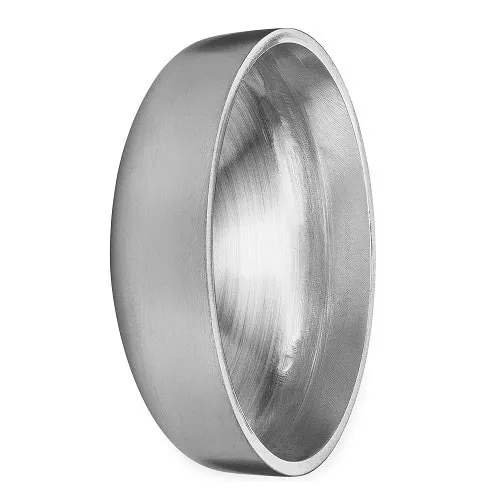-
Cangzhou Yulong Steel Co., Ltd.
-
Phone:
+86 13303177267 -
Email:
admin@ylsteelfittings.com
- English
- Arabic
- Italian
- Spanish
- Portuguese
- German
- kazakh
- Persian
- Greek
- French
- Russian
- Polish
- Thai
- Indonesian
- Vietnamese
- Zulu
- Korean
- Uzbek
- Hindi
- Serbian
- Malay
- Ukrainian
- Gujarati
- Haitian Creole
- hausa
- hawaiian
- Hebrew
- Miao
- Hungarian
- Icelandic
- igbo
- irish
- Japanese
- Javanese
- Kannada
- Khmer
- Rwandese
- Afrikaans
- Albanian
- Amharic
- Armenian
- Azerbaijani
- Basque
- Belarusian
- Bengali
- Bosnian
- Bulgarian
- Catalan
- Cebuano
- China
- China (Taiwan)
- Corsican
- Croatian
- Czech
- Danish
- Esperanto
- Estonian
- Finnish
- Frisian
- Galician
- Georgian
- Kurdish
- Kyrgyz
- Lao
- Latin
- Latvian
- Lithuanian
- Luxembourgish
- Macedonian
- Malgashi
- Malayalam
- Maltese
- Maori
- Marathi
- Mongolian
- Myanmar
- Nepali
- Norwegian
- Norwegian
- Occitan
- Pashto
- Dutch
- Punjabi
- Romanian
- Samoan
- Scottish Gaelic
- Sesotho
- Shona
- Sindhi
- Sinhala
- Slovak
- Slovenian
- Somali
- Sundanese
- Swahili
- Swedish
- Tagalog
- Tajik
- Tamil
- Tatar
- Telugu
- Turkish
- Turkmen
- Urdu
- Uighur
- Welsh
- Bantu
- Yiddish
- Yoruba

Nov . 17, 2024 17:59 Back to list
Similar Specifications for DIN 2642 Flanges in Industrial Applications and Standards
Understanding DIN 2642 Flanges A Comprehensive Overview
Flanges are critical components in various piping systems, providing a method for connecting pipes, valves, pumps, and other equipment. Among the various types of flanges available, DIN 2642 flanges are particularly significant in industries requiring durable and reliable piping solutions. The DIN in DIN 2642 stands for Deutsches Institut für Normung (German Institute for Standardization), which indicates that these flanges conform to specific German standards that ensure their quality and compatibility.
Key Features of DIN 2642 Flanges
DIN 2642 flanges are primarily made from high-quality materials such as carbon steel, stainless steel, and alloy steels. Their design usually includes a flat face or raised face that allows for effective sealing when bolted to another surface. The dimensions and tolerances of these flanges are precisely defined in the DIN standard, which includes specifications for sizes ranging typically from DN 10 (10 mm) to DN 1000 (1 meter).
One essential aspect of DIN 2642 flanges is their classification into different pressure ratings, such as PN 6, PN 10, and PN 16. These ratings indicate the maximum allowable pressure the flange can withstand under specific temperature conditions. When selecting a flange, it is crucial to consider both the pressure rating and the operational environment, as different materials respond uniquely to temperature, pressure, and chemical exposure.
Applications of DIN 2642 Flanges
din 2642 flange

Due to their sturdy design and reliability, DIN 2642 flanges find applications across various sectors, including oil and gas, chemical processing, water treatment, and power generation. They are commonly used in piping systems to create secure connections that can handle rigorous operational demands. Moreover, their availability in different sizes and materials allows engineers to tailor solutions to specific application requirements, ensuring that the flanges meet both functional and safety standards.
Installation and Maintenance
The installation of DIN 2642 flanges requires careful attention to detail to ensure a proper seal and avoid leaks. It's essential to use the correct gasket material that is compatible with the fluid being transported and to follow the appropriate torque specifications during the assembly. Regular maintenance is also necessary to prolong the life of the flange and prevent issues such as corrosion, which can significantly affect performance.
Conclusion
In conclusion, DIN 2642 flanges are a vital component in a wide range of industrial applications, owing to their standardized design and high durability. Understanding their specifications, applications, and installation techniques is crucial for engineers and technicians involved in piping systems. By adhering to best practices in selection, installation, and maintenance, industries can ensure a safe and efficient operation of their piping networks, thereby enhancing productivity and reliability in their operations. The importance of DIN 2642 flanges cannot be overstated, as they play a significant role in the integrity and functionality of modern piping systems.
Latest news
-
ANSI 150P SS304 SO FLANGE
NewsFeb.14,2025
-
ASTM A333GR6 STEEL PIPE
NewsJan.20,2025
-
ANSI B16.5 WELDING NECK FLANGE
NewsJan.15,2026
-
ANSI B16.5 SLIP-ON FLANGE
NewsApr.19,2024
-
SABS 1123 FLANGE
NewsJan.15,2025
-
DIN86044 PLATE FLANGE
NewsApr.19,2024
-
DIN2527 BLIND FLANGE
NewsApr.12,2024
-
JIS B2311 Butt-Welding Fittings LR/SR 45°/90° /180°Seamless/Weld
NewsApr.23,2024











